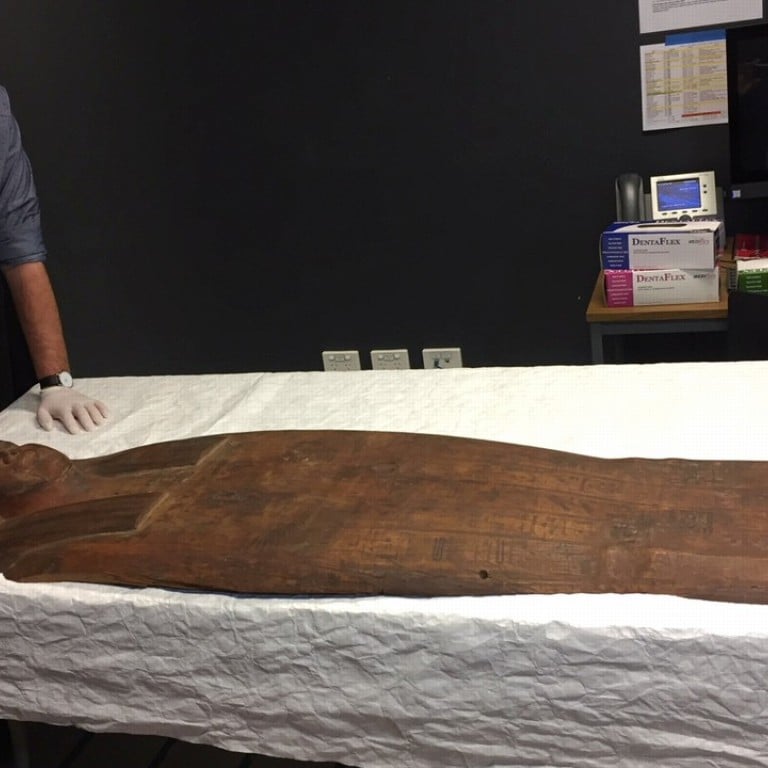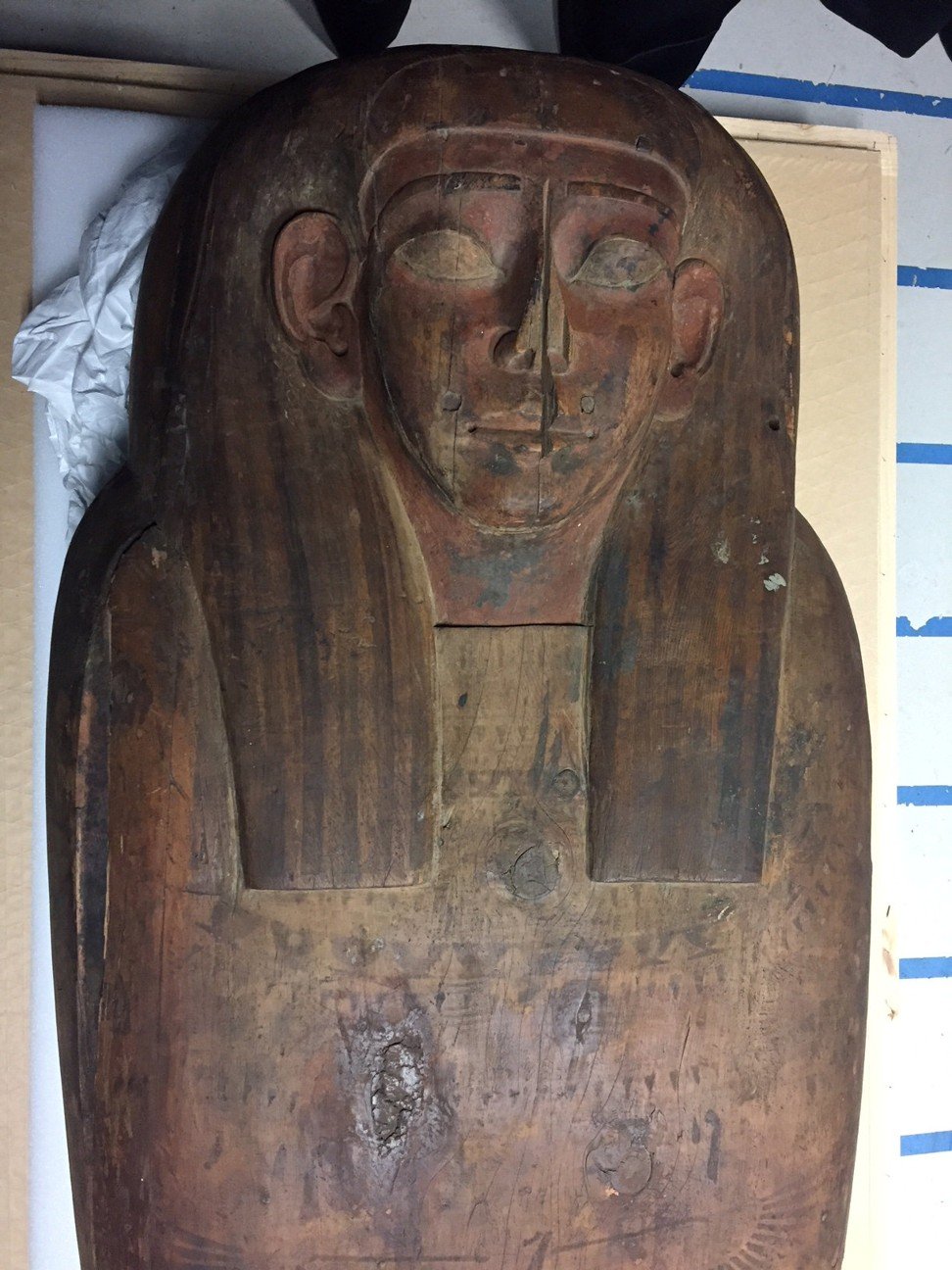
A museum thought this coffin was empty … but inside was a 2,500-year-old Egyptian mummy
Australian academics could help unlock mysteries around ancient Egypt after discovering that a 2,500-year old coffin might contain the remains of a prestigious mummy
For decades, the coffin was relegated to an acrylic display case in a classroom used for workshops and field trips at the Nicholson Museum in Sydney.
The outside the sarcophagus was intriguing enough: the face of a woman at rest was carved into the dark wood.
Hieroglyphs indicated its occupant was a high priestess from the temple of the goddess Sekhmet.
The coffin, from 600BC, had been bought by Sir Charles Nicholson from an Egyptian antiquities market in 1857 or 1858, records said.
It was among the hundreds of items Nicholson had bequeathed to the University of Sydney to launch the museum that would bear his name.
But according to museum records, the sarcophagus was empty – or contained debris, at best – and so, year after year, it remained out of public view, compared to the more prominently displayed Egyptian pieces in the rest of the Nicholson’s collection.
That will no longer be the case.

Museum archaeologists opened the coffin last summer, expecting to find “a few residual bandages and bones from a mummy removed by tomb robbers in the 19th century,” senior curator Jamie Fraser wrote in the March issue of Muse, a University of Sydney publication.
“We could not have been more wrong,” he said.
Inside they discovered a stunning jumble of human bones, resin fragments, bandages and faience beads that had once rested over the mummy as a net.
One thing was for certain: the coffin was not empty – and it most likely had held human remains the entire time.
The discovery offers scientists an almost unique opportunity to test the cadaver.
“We can start asking some intimate questions that those bones will hold around pathology, about diet, about diseases, about the lifestyle of that person – how they lived and died,” Fraser said.
Whole mummies are typically left intact, limiting their scientific benefits.
Adding to the potential rewards is the possibility that the remains are those of a distinguished woman of an age where little is known, Fraser said.
Hieroglyphs show the original occupant of the coffin was a female called Mer-Neith-it-es, who academics believe was a high priestess in 600BC, the last time Egypt was ruled by native Egyptians.
“We know from the hieroglyphs that Mer-Neith-it-es worked in the Temple of Sekhmet, the lion-headed goddess,” Fraser said.
“There are some clues in hieroglyphs and the way the mummification has been done and the style of the coffin that tell us about how this Temple of Sekhmet may have worked.”
The Washington Post, Reuters
